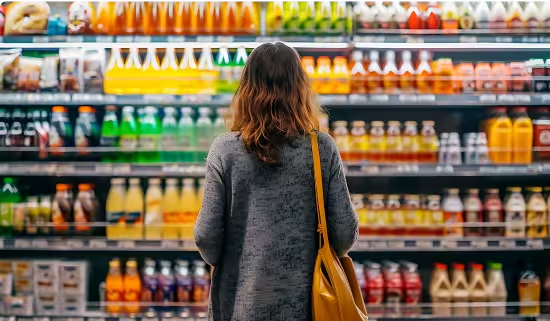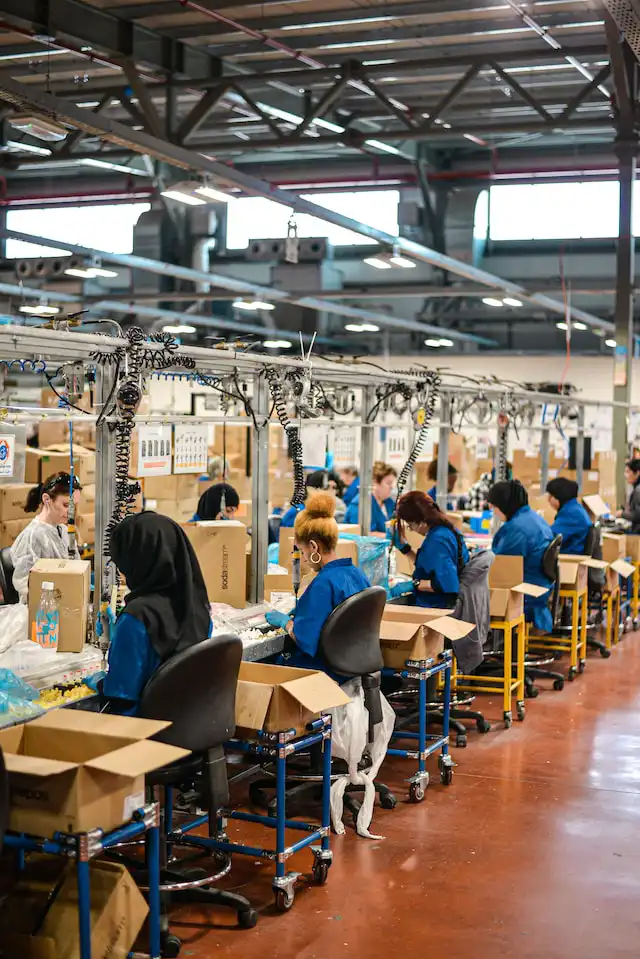
India Social E-Commerce Market Outlook to 2027 (Second Edition)
Driven by growing internet penetration rate and consumers shifting preference towards availing digital medium for purchases
Region:Asia
Author(s):Mayukh Sen
Product Code:KR1178
July 2022
78
About the Report
The publication titled ‘India Social E-Commerce Market Outlook to 2027: Driven by growing internet penetration rate and consumers shifting preference towards availing digital medium for purchases” provides a comprehensive analysis of the social e-commerce market by analyzing historical statistics and corresponding developments in the social e-commerce industry. The report covers various aspects including social e-commerce market size on the basis of revenue, overview of the market, ecosystem, overview of major entities operating in the ecosystem, number of social media users, smartphone penetration rate, internet penetration rate, growth trends and developments, Porter 5 Forces Analysis, government initiatives, impact of COVID-19, and risk factors governing the future outlook of industry. Insights on competitive landscape of social and cross comparison between major players operating in the ecosystem is also covered in the report on the basis of operational and financial parameters such as year of establishment, location, funding stage, employee size, funding received, investors, geographic presence, investment raised, average transaction size, fees & commission, number of registered sellers, app downloads, active users, marketing strategies, recent developments, strengths, weaknesses, company overview revenue streams, product portfolio, business strategy, USP, revenue, expenses, current assets, current liabilities and profit before tax. Further, the report covers a demand analysis overview on the basis of TAM, SAM and SOM.

The report also focuses on the Social E-Commerce Market Segmentation by Start-up (Meesho, GlowRoad, Shop 101, Mall 91, Bulbul, Simism, DealShare, Roposo, Trell and Others); By Category (Women Fashion, Men Fashion, Home & Kitchen, Beauty & Grooming, Electronics and Others); By Region (Northern, Southern, Eastern and Western); By Age of Users (Below 20 Years, 20-40 Years, 40-60 Years and Above 60 Years); By Gender (Female and Male); By Platform (Mobile Application, WhatsApp, Facebook, Instagram and Others) and By Ticket Size (Less than INR 500, INR 500-1000, INR 1000-5000 and More than INR 5000). India Social E-Commerce Market report concludes with projections for the future of the industry on the basis of revenue by 2027, industry speaks and analysts’ take on the future highlighting the major opportunities.
India Social E-Commerce Industry Market Overview and Size
India social e-commerce market industry expanded with a CAGR of 281.6% in between FY’17 and FY’22 on the basis of revenue generated. One of the major determinant of the surging growth of social e-commerce market is attributed to the digital boom, backed by higher internet and smartphone penetration rate in India. Consumers changing preference towards purchasing customized products through digital medium post COVID-19 and the convenience of interaction between buyers and sellers that social e-commerce platforms offer acted as a catalyst for the surging growth. Coupled with that, “Digital India” initiative launched by the government of India in FY’15 to ensure improvement in online infrastructure and citizen’s digital literacy contributed in the adaptation to social e-commerce platforms. Due to the huge potential of the market, leading e-commerce players such as Myntra, and Flipkart among others initiated the process of integrating the ecosystem by diversifying its business or through acquisitions in recent years. In FY’21, Walmart owned fashion retailer Myntra announced the launch of M-Live, a social commerce platform extending interactive and real time shopping experience to its customers. Furthermore, consumers shifting preference towards availing digital medium for their daily purchases followed by the advent of COVID-19, resulted in the growing use of social e-commerce platforms. Majorly consumers in India avail social e-commerce platforms for purchasing food products, electronics, fashion products, home & kitchen appliances and personal care. Realizing the massive potential of the social e-commerce market which is currently in the nascent phase, various home grown start-ups have ventured in the social commerce business to capitalize on this opportunity as of FY’22. Integration of these start-ups in the ecosystem opens up avenue for the sellers especially from Tier 2 and Tier 3 cities.
India Social E-Commerce Market Segmentation
By Start-up (Meesho, DealShare, Shop 101, Roposo, GlowRoad, Simsim and Others): Meesho contributed to the majority share on the basis of revenue generated in FY’22 followed by DealShare and Shop 101. Consumers especially from lower Tier cities preferred availing these platforms due to the wide range of products available and lower average ticket size as compared to e-commerce platforms such as Amazon and Flipkart.
By Category (Women Fashion, Home & Kitchen, Men Fashion, Beauty & Grooming, Electronics and Others): Women fashion products were the most demanded in FY’22 from social commerce platforms, which accounted for the highest revenue share. Consumers preferred fashion products due to their low ticket size as compared to electronics in FY’22, as these consumers were majorly from Tier 2 and Tier 3 cities with lower spending capability.
By Age of Users (Below 20 Years, 20-40 Years, 40-60 Years and Above 60 Years): Sale of products to consumers aged between 20-40 years through social e-commerce platforms contributed to the majority share in FY’22 on the basis of revenue generated. As most of the consumers within this age bracket are tech savvy and are financially independent than customers aged below 20 years, they are better suited to avail digital medium for their purchases. Revenue generation from customers aged above 60 years only contributed a small percentage share of the overall revenue generated by the social e-commerce market in India; attributed to their lack of digital knowledge.
By Gender (Female and Male): The user base of social commerce platforms were vastly different from other online platforms such as Amazon and Flipkart. The target customer base for these social commerce platforms are majorly women from Tier 2 and Tier 3 cities. Therefore, on the basis of gender, women consumers contributed to the highest revenue share in FY’22 from sales of products on social commerce platforms.
By Platform (Mobile Application, WhatsApp, Facebook, Instagram, Website and Others): Mobile applications (social e-commerce mobile applications) were the most availed platform while purchasing products from social e-commerce platforms, contributing to the highest share on the basis of revenue generated in FY’22. The increasing smartphone penetration rate in India contributed in consumers availing social e-commerce applications on their smartphones.
By Ticket Size (Less than INR 500, INR 500-1000, INR 1000-5000 and More than INR 5000): Since most of the social e-commerce customers were from lower Tier cities as of FY’22, one of their major determinants to consider is the pricing of the product. As consumers have the convenience to choose a specific product from different platforms, these consumers generally prefer purchasing products through a platform offering lower ticket size of products. Revenue generated from sales of product on social e-commerce platforms with ticket size less than INR 500 accounted for the highest share in FY’22
By Region (Northern, Eastern, Western and Southern): Revenue generated from sales of product on social e-commerce platforms from Southern region contributed to the highest share FY’22. Most of the social e-commerce start-ups such as Meesho, GlowRoad and Roposo among others are based out of Bangalore, therefore the expansion of consumer base and marketing capability of players in the Southern region outweighed the expansion to other regions of India.
Competitive Landscape in India Social E-Commerce Market
The India social e-commerce market is highly competitive and is currently in the nascent phase. There exist significant competition among the players due to lack of product differentiation and no switching cost for customers. Players compete on the basis of pricing of products as well as other factors that influence buyers’ choice such as delivery time, product quality, digital presence, logistic costs, customer service and discounts & offers among others. The average ticket size of products sold through social e-commerce platforms stood at INR~500 as of FY’22. Major players in the ecosystem includes Meesho, DealShare, Shop 101, Bulbul, Roposo, GlowRoad and Simsim among others.
India Social E-Commerce Marker Future Outlook and Projections
The market size on the basis of revenue is expected to grow at a five-year CAGR of 80.5% in between FY’22 and FY’27E. With improved online ecosystem and internet connectivity expected in coming years, buyers and sellers especially from rural regions, Tier 2 and Tier 3 cities will be better connected through a digital ecosystem. The improved digital connectivity across these regions will aid the surging growth of social e-commerce market in India in between FY’22 and FY’27E. Further, the improved digital connectivity also extends a platform to sellers from rural regions, Tier 2 and Tier 3 cities to market their products to a larger consumer base. Product owners customizing content according to local language of the individuals will be the norm in the social e-commerce domain to create a lasting impact in coming years. The social e-commerce market in India will undergo rapid transformation with the integration of various home grown start-ups entering the market.
Key Topics Covered in the Report
- Overview of Social E-Commerce Market in India
- Internet Penetration Rate and Number of Social Media Users in India
- Ecosystem of Major Entities in India Social E-Commerce Market
- Market Size of India Social E-Commerce Market (Basis Revenue in INR Crore)
- Average Ticket Size of Social E-Commerce
- India Social E-Commerce Market Segmentation (By Startup, By Category, By Age of Users, By Region, By Gender, By Platform, By Ticket Size)
- Trends and Developments in India Social E-Commerce Market
- Issues and Challenges in India Social E-Commerce Market
- Porter 5 Forces Analysis of India Social E-Commerce Market
- Government Regulations in India Social E-Commerce Market
- Impact of COVID-19 on India Social E-Commerce Market
- Cross Comparison of Major Social E-Commerce Players (on the basis of Year of Establishment, Number of Employees, Geographic Presence, Investment Raised, Average Transaction Size, Fees and Commissions Charged, Number of Registered Sellers, App Downloads, Active Users, Marketing Strategies, Recent Developments)
- Strengths and Weaknesses of Major Social E-Commerce Players
- Cross Comparison of Major Social E-Commerce Players on the basis of Financial Parameters (Total Revenue for FY’19, FY’20 and FY’21; Total Expenses for FY’21, Other Expenses for FY’21, Current Assets for FY’21, Current Liabilities for FY’21)
- Company Profiles of Major Social E-Commerce Players (Company Overview, Product Portfolio, Revenue Streams, Business Strategy, USP)
- TAM, SAM and SOM for Social E-Commerce Market in India
- Future Market Size of India Social E-Commerce Market (Basis Revenue in INR Crore)
- India Social E-Commerce Market Future Segmentation (By Startup, By Category, By Age of Users, By Region, By Gender, By Platform, By Ticket Size)
- Analyst Recommendations
- Industry Speaks
- Research Methodology
Products
Key Target Audience
Current Incumbents in the Social E-Commerce space
Companies looking to enter the Social E-Commerce space in India
Industry Associations
PE/VC Firms
Government Bodies
Time Period Captured in the Report:
Historical Period: FY’17-FY’22
Forecast Period: FY’22-FY’27E
Companies
Key Segments Covered in India Social E-Commerce Market
By Start-up
Meesho
Dealshare
Shop101
Roposo
GlowRoad
Simsim
Others
By Category
Women Fashion
Home & Kitchen
Men Fashion
Beauty & Grooming
Electronics
Others
By Age of Users
Below 20 Years
20-40 Years
40-60 Years
Above 60 Years
By Region
Northern Region
Southern Region
Eastern Region
Western Region
By Gender
Male
Female
By Platform
Mobile Application
WhatsApp
Facebook
Instagram
Website
Others
By Ticket Size
Less than INR 500
INR 500-1000
INR 1000-5000
More than INR 5000
India Social E-Commerce Players
Startups
Meesho
Bulbul
Dealshare
Ezmall.com
GlowRoad
Trell
WMall
Roposo
ResellMe
Shop101
Mall91
Simsim
Yaari
Shopsy
Payments and Logistics Partners
DTDC
XpressBees
FedEx
Razorpay
Delhivery
Regulatory Bodies and Associations
TECI (The E-Business Council of India)
Ministry of Electronics and Information Technology, Government of India
CCI (Competition Commission of India)
CIE (Confederation of Indian E-Commerce)
Table of Contents
Executive Summary
2. India Social E-Commerce Market Overview
2.1. Overview of Social E-Commerce Market in India
2.2. Ecosystem of Major Entities in India Social E-Commerce Market
2.3. Overview of Major Entities in India Social E-Commerce Market
3. South East Asian Social E-Commerce Market
3.1 Cross-Comparison of SEA, China, Indonesia & India Social E-Commerce Market
3.2 Promotion of sales via social media platform
3.3 Key Parameters in the Chinese Market
3.4 Key Parameters in the Indonesia Market
3.5 Cross-Comparison Business Models in China & India
4. Market Size of India Social E-Commerce Market on the basis of Revenue (INR), FY’17-FY’22
5. India Social E-Commerce Market Segmentation, FY’22
5.1. By Start-up (Meesho, GlowRoad, Shop 101, Mall 91, Bulbul, Simism, DealShare, Roposo, Trell and Others)
5.2. By Category (Women Fashion, Men Fashion, Home & Kitchen, Beauty & Grooming, Electronics and Others) and By Age of Users (Below 20 Years, 20-40 Years, 40-60 Years, and Above 60 Years)
5.3. By Gender (Female and Male) and By Platform (Mobile Application, WhatsApp, Facebook, Instagram and Others)
5.4. By Ticket Size (Less than INR 500, INR 500-1000, INR 1000-5000 and More than INR 5000) By Region (Northern, Eastern, Western and Southern)
6. Industry Analysis
6.1. Trends and Developments
6.2. Issues and Challenges
6.3. Porter 5 Forces Analysis
6.4. Government Regulations
6.5. Impact of COVID-19
7. Competitive Landscape of India Social E-Commerce Market
7.1. Cross Comparison of Major Social E-Commerce Players (Meesho, Dealshare, GlowRoad, Shop 101, SimSim and Bulbul) in terms of Year of Establishment, Number of Employees, Geographic Presence, Investment Raised, Average Transaction Size, Fees and Commission Charged, Number of Registered Sellers, App Downloads, Active Users, Marketing Strategies, Recent Developments, Strengths and Weaknesses and on the basis of Financial Parameters
7.2. Company Profile of Meesho (Company Overview, Revenue Streams, Product Portfolio, Business Strategy and USP)
7.3. Company Profile of GlowRoad (Company Overview, Revenue Streams, Product Portfolio, Business Strategy and USP)
7.4. Company Profile of Shop 101 (Company Overview, Revenue Streams, Product Portfolio, Business Strategy and USP)
7.5. Company Profile of Bulbul (Company Overview, Revenue Streams, Product Portfolio, Business Strategy and USP)
7.6. Company Profile of Simsim (Company Overview, Revenue Streams, Product Portfolio, Business Strategy and USP)
7.7. Company Profile of DealShare (Company Overview, Revenue Streams, Product Portfolio, Business Strategy and USP)
7.8 Failure Case Study of Wooplr
8. Demand Analysis
8.1. Gap filled by Social E-Commerce
8.2. Comparison of Traditional, E-Commerce and Social E-Commerce
8.3. TAM, SAM and SOM for Social E-Commerce Market in India, FY’22
9. Future Outlook and Projections of India Social E-Commerce Market on the basis of Revenue (INR), FY’22-FY’27E
10. Future Market Segmentation of India Social E-Commerce Market, FY’22 & FY’27E
10.1. By Start-up (Meesho, GlowRoad, Shop 101, Mall 91, Bulbul, Simism, DealShare, Roposo, Trell and Others)
10.2. By Category (Women Fashion, Men Fashion, Home & Kitchen, Beauty & Grooming, Electronics and Others), By Age of Users (Below 20 Years, 20-40 Years, 40-60 Years, and Above 60 Years) and By Region (Northern, Eastern, Western and Southern)
10.3. By Gender (Female and Male) and By Platform (Mobile Application, WhatsApp, Facebook, Instagram and Others), and By Ticket Size (Less than INR 500, INR 500-1000, INR 1000-5000 and More than INR 5000)
11. Analyst Recommendations
12. Industry Speaks
13. Research Methodology
Disclaimer Contact UsWhy Buy From Us?

What makes us stand out is that our consultants follows Robust, Refine and Result (RRR) methodology. i.e. Robust for clear definitions, approaches and sanity checking, Refine for differentiating respondents facts and opinions and Result for presenting data with story

We have set a benchmark in the industry by offering our clients with syndicated and customized market research reports featuring coverage of entire market as well as meticulous research and analyst insights.

While we don't replace traditional research, we flip the method upside down. Our dual approach of Top Bottom & Bottom Top ensures quality deliverable by not just verifying company fundamentals but also looking at the sector and macroeconomic factors.

With one step in the future, our research team constantly tries to show you the bigger picture. We help with some of the tough questions you may encounter along the way: How is the industry positioned? Best marketing channel? KPI's of competitors? By aligning every element, we help maximize success.

Our report gives you instant access to the answers and sources that other companies might choose to hide. We elaborate each steps of research methodology we have used and showcase you the sample size to earn your trust.

If you need any support, we are here! We pride ourselves on universe strength, data quality, and quick, friendly, and professional service.















